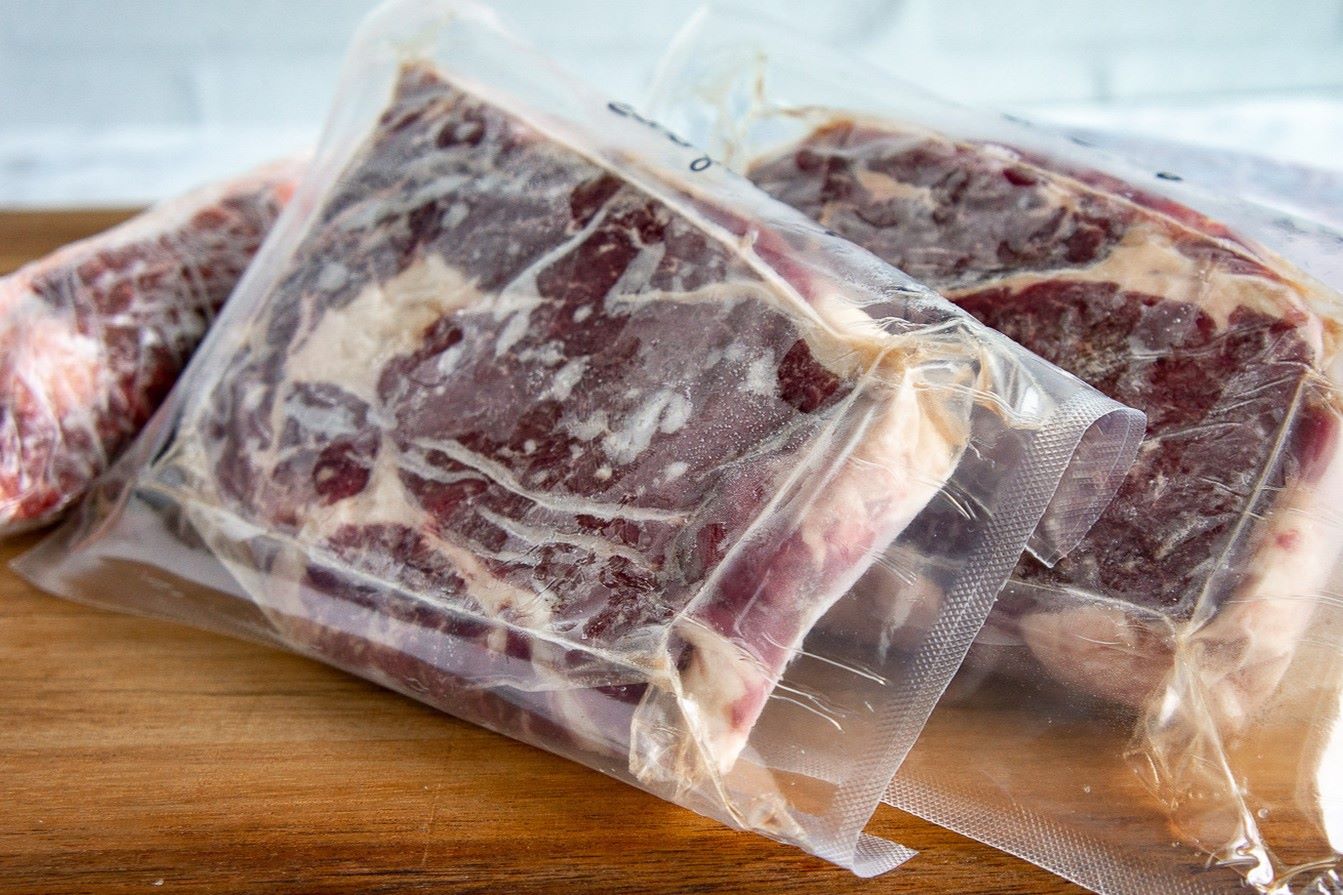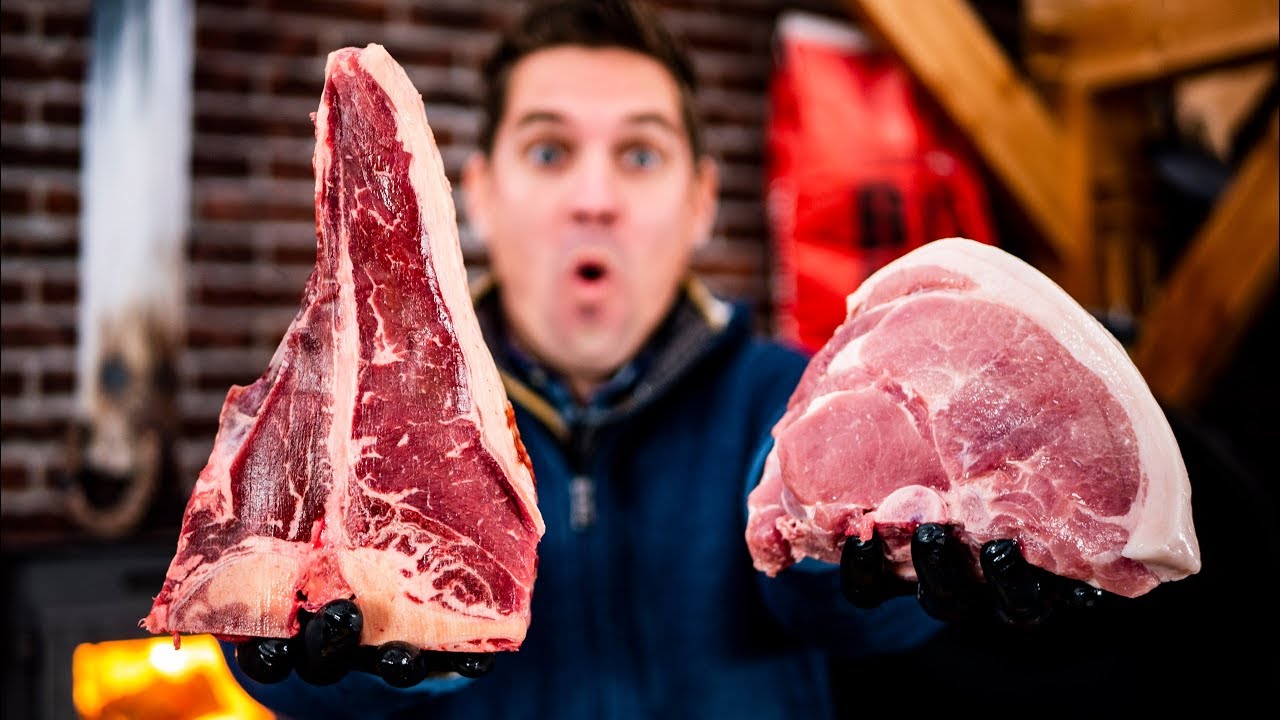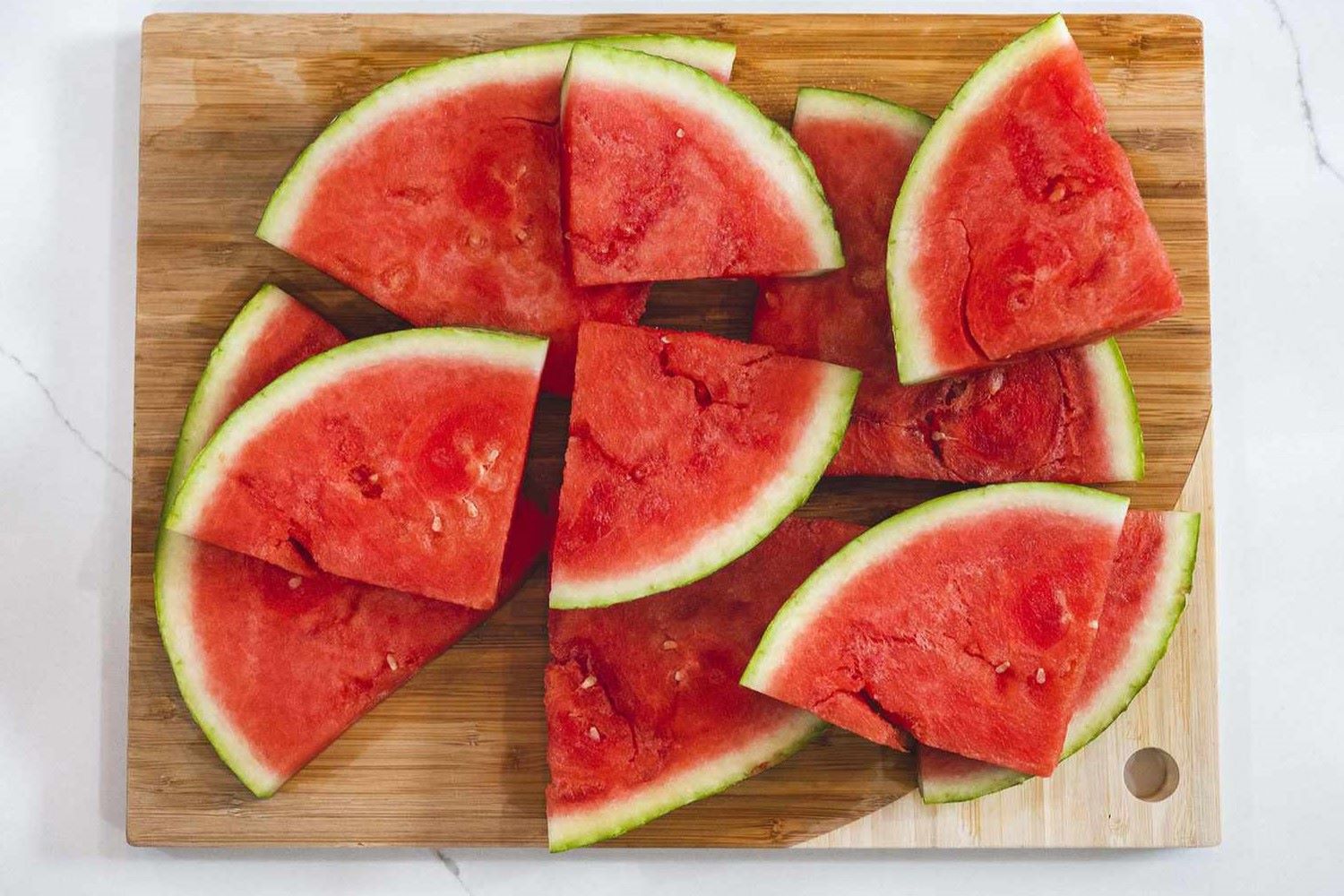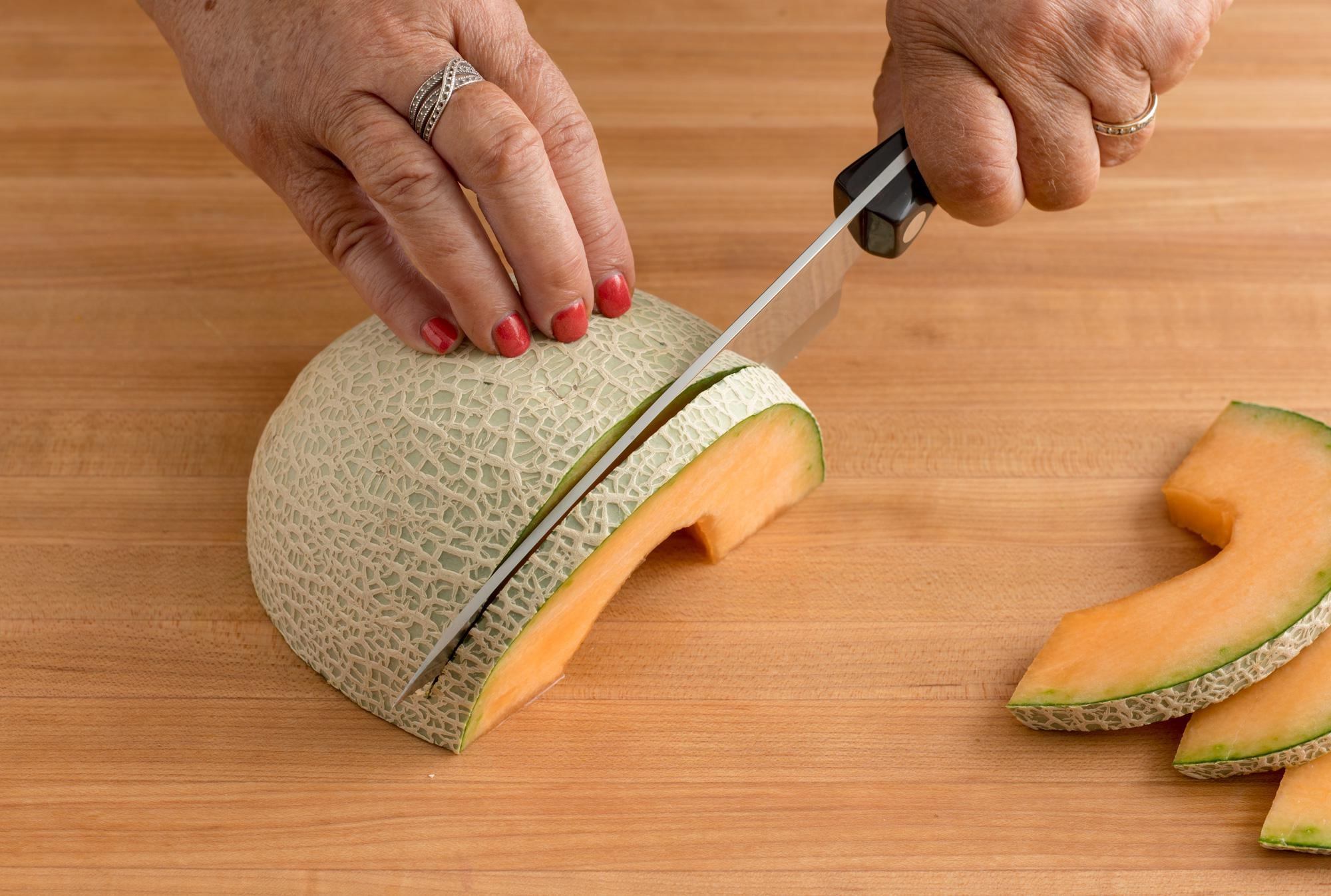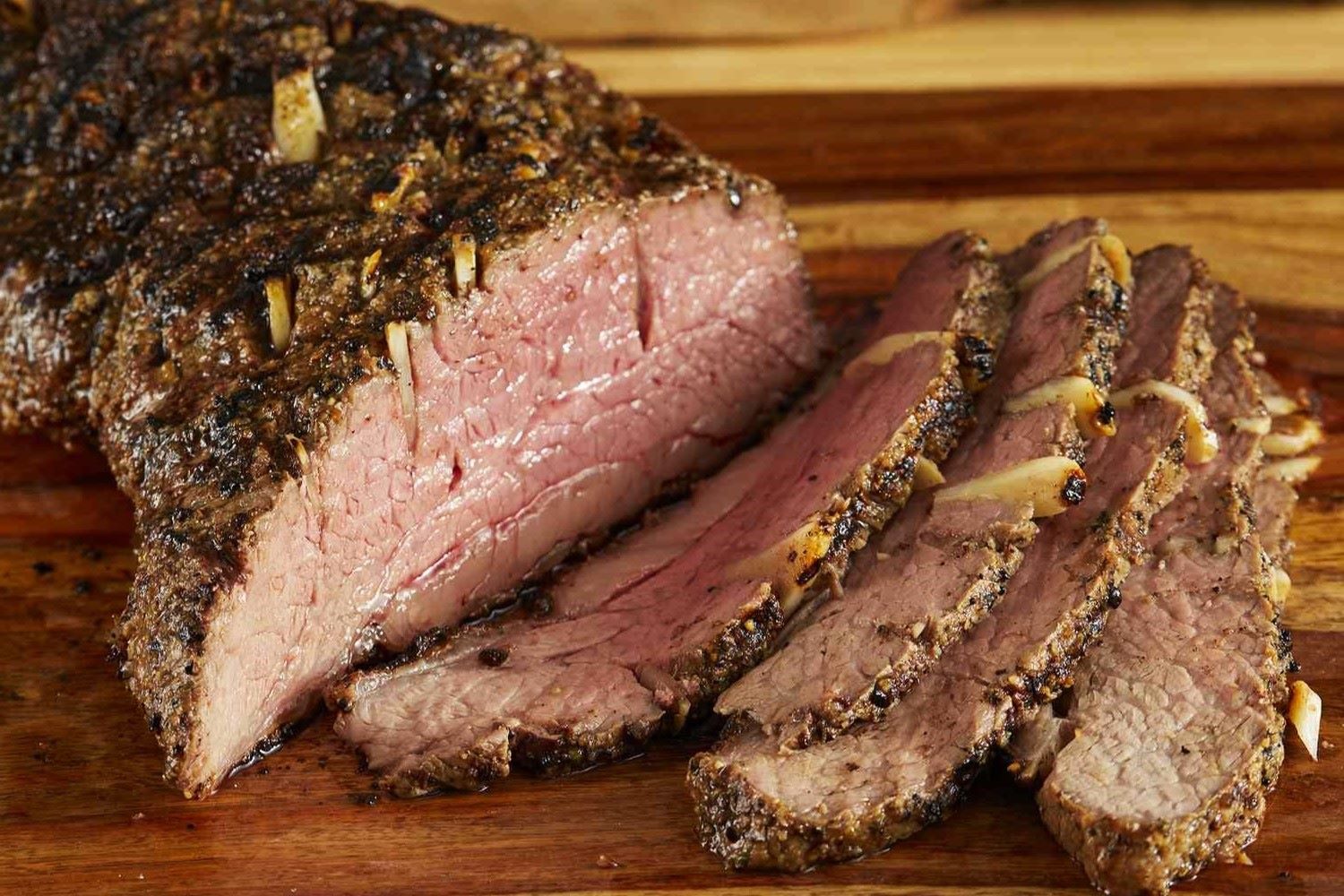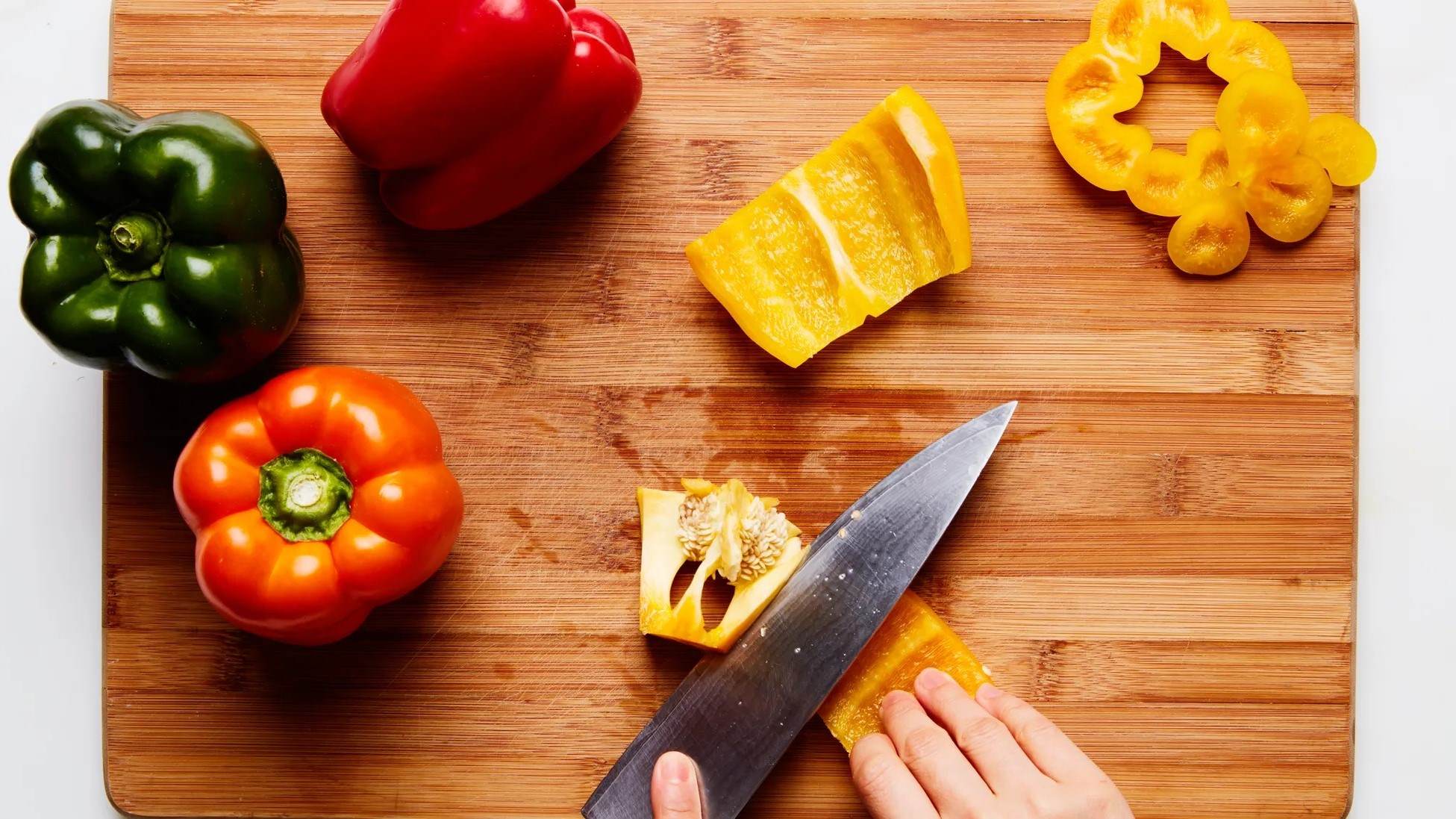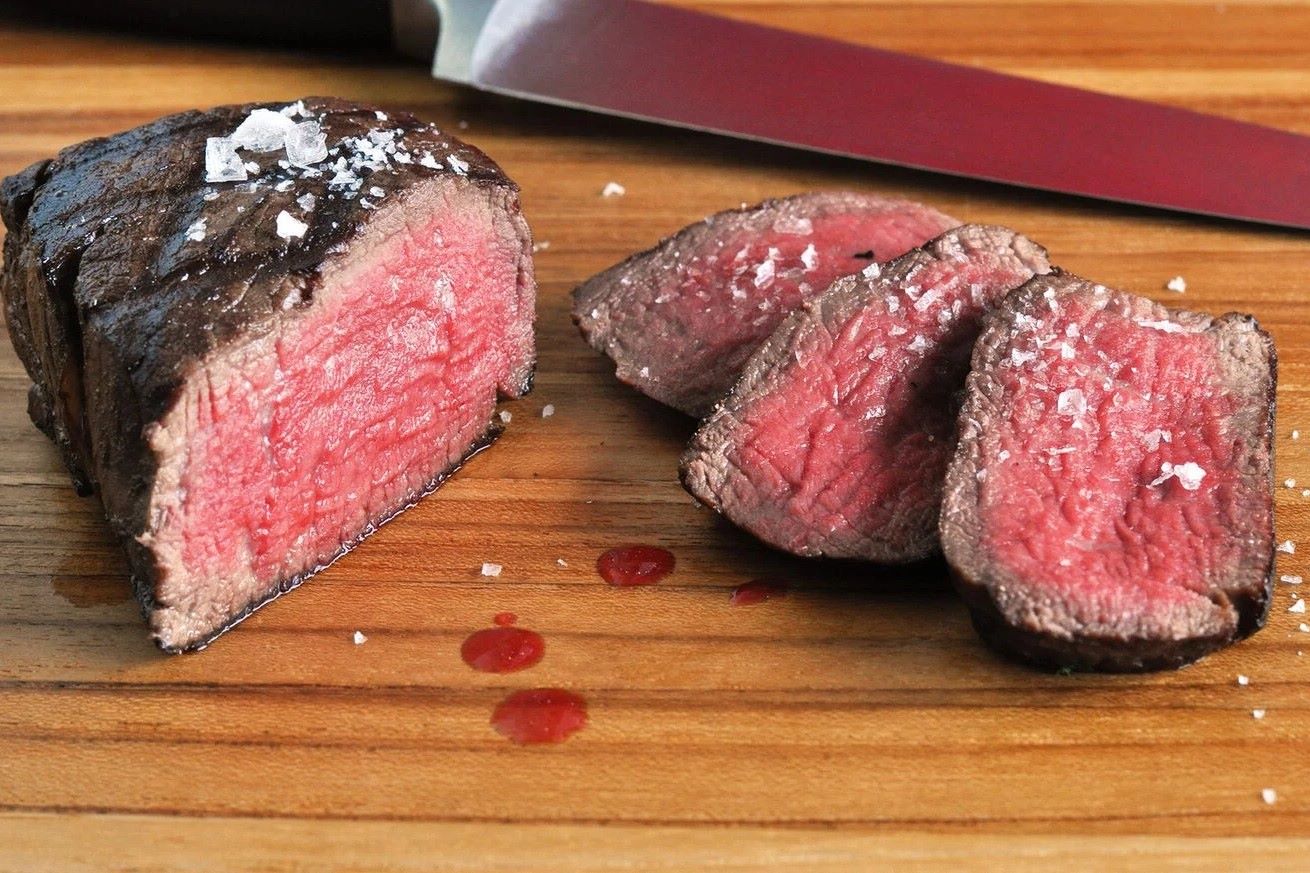Home>Food and Cooking>How To Properly Cut Steak Against The Grain
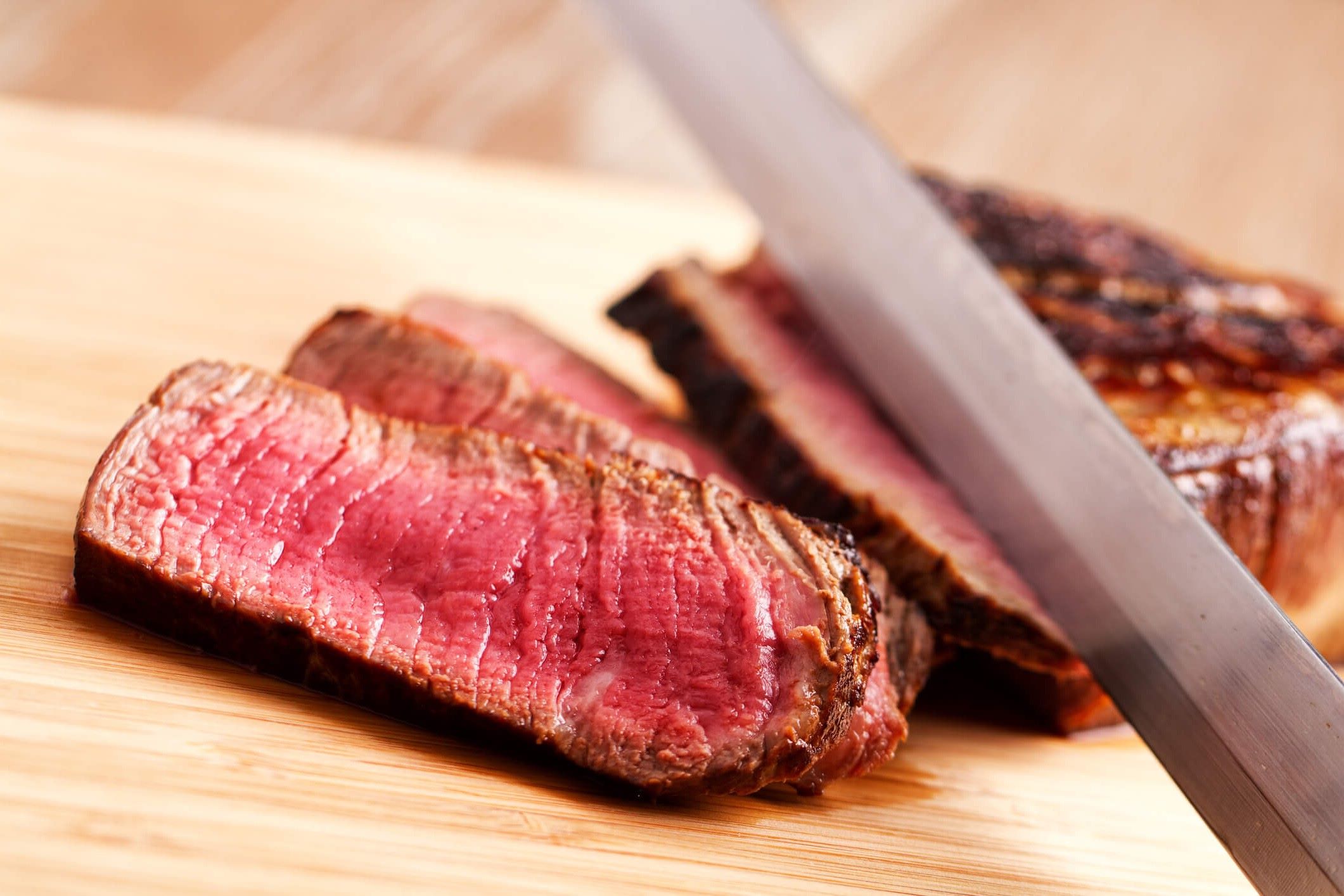

Food and Cooking
How To Properly Cut Steak Against The Grain
Published: February 29, 2024
Learn the best technique for cutting steak against the grain to enhance tenderness and flavor. Get expert tips and tricks for food and cooking.
(Many of the links in this article redirect to a specific reviewed product. Your purchase of these products through affiliate links helps to generate commission for Noodls.com, at no extra cost. Learn more)
Table of Contents
Introduction
Cutting steak against the grain is a fundamental culinary technique that can significantly impact the tenderness and overall dining experience of this beloved protein. Whether you're a seasoned home cook or a novice in the kitchen, mastering the art of slicing steak against the grain can elevate your dishes to new heights. By understanding the grain of the steak and employing the right tools and techniques, you can unlock the full potential of your steak, ensuring each bite is tender and bursting with flavor.
Properly cutting steak against the grain involves more than just slicing through the meat. It requires a keen eye, a steady hand, and a deep appreciation for the nuances of texture and mouthfeel. When executed correctly, this method can transform even tougher cuts of meat into succulent, melt-in-your-mouth delicacies.
In this comprehensive guide, we will delve into the intricacies of cutting steak against the grain, providing you with the knowledge and skills needed to achieve perfect slices every time. From understanding the grain of the steak to the step-by-step process of slicing and essential tips for success, this article will equip you with the expertise to take your steak-cutting abilities to the next level.
So, whether you're preparing a sizzling ribeye for a weekend barbecue or crafting a mouthwatering beef stir-fry, mastering the art of cutting against the grain is a culinary game-changer. Get ready to elevate your cooking prowess and delight your taste buds with perfectly sliced, tender steak that will leave your guests craving for more.
Read more: How To Cut Ribeye Steak
Understanding the Grain of the Steak
Before delving into the precise techniques of cutting steak against the grain, it's crucial to grasp the concept of the grain itself. In the culinary realm, the term "grain" refers to the direction in which the muscle fibers of the meat run. These fibers are visible as long, parallel lines that traverse the surface of the steak. Understanding the orientation of these fibers is pivotal in achieving tender, delectable slices of steak.
When examining a raw steak, the grain typically runs parallel to the longest side of the meat. It's essential to identify this direction, as it serves as a guide for the cutting process. By slicing perpendicular to the grain, you effectively shorten the muscle fibers, resulting in a more tender and easier-to-chew texture. Conversely, cutting parallel to the grain can yield tougher, chewier slices, as it leaves the muscle fibers intact and unbroken.
To determine the grain of the steak, take a moment to observe the lines running across the surface. They should be readily visible, resembling natural striations that indicate the direction of the muscle fibers. Additionally, gently running your fingers along the surface can provide tactile feedback, allowing you to discern the alignment of the grain.
Different cuts of steak may exhibit variations in the grain pattern. For instance, a flank steak features long, pronounced muscle fibers that run the length of the meat, while a tenderloin may display a finer, more intricate grain. Understanding these distinctions is essential, as it informs the manner in which each specific cut should be sliced for optimal tenderness and flavor.
By honing your ability to identify and comprehend the grain of the steak, you lay the groundwork for precision and mastery in the art of cutting against the grain. This foundational knowledge sets the stage for the subsequent steps in the steak-cutting process, empowering you to unlock the full potential of each delectable cut of meat.
Tools and Equipment Needed
When it comes to properly cutting steak against the grain, having the right tools and equipment at your disposal is essential for achieving precise and consistent results. From knives to cutting boards, each component plays a crucial role in the steak-cutting process, ensuring that the end product is tender, flavorful, and visually appealing.
1. Chef's Knife:
A high-quality chef's knife is the cornerstone of any steak-cutting endeavor. Opt for a well-balanced, sharp knife with a sturdy handle, as it provides the control and precision necessary for slicing through the meat with ease. The length of the blade should accommodate the size of the steak, allowing for smooth, uninterrupted cuts.
2. Cutting Board:
Selecting the right cutting board is equally important. Choose a durable, non-slip board that provides a stable surface for slicing the steak. Wooden and plastic cutting boards are popular choices, each offering distinct advantages. Wooden boards are gentle on knife edges and develop a natural patina over time, while plastic boards are dishwasher-safe and easy to sanitize.
Read more: How To Cut Flank Steak
3. Tongs or Meat Fork:
Tongs or a meat fork are invaluable for securing the steak in place during the cutting process. These tools offer stability and control, preventing the meat from shifting or sliding as you make precise cuts against the grain. Opt for tongs with a firm grip and a comfortable handle, allowing for effortless maneuvering of the steak.
4. Honing Steel or Sharpener:
Maintaining the sharpness of your chef's knife is paramount for achieving clean, uniform slices. A honing steel or sharpener enables you to keep the blade in optimal condition, ensuring that it effortlessly glides through the steak without tearing or shredding the meat fibers. Regularly honing and sharpening your knife is a fundamental aspect of the steak-cutting process.
5. Clean Towels or Paper Towels:
Having clean towels or paper towels on hand is essential for patting the steak dry before slicing. Removing excess moisture from the surface of the meat promotes better browning and caramelization during cooking, enhancing the overall flavor and texture of the steak.
Equipped with these essential tools and equipment, you are poised to embark on a journey of precision and finesse as you master the art of cutting steak against the grain. With the right implements at your disposal, you can elevate your culinary skills and delight in the creation of perfectly sliced, tender steak that will captivate the senses and leave a lasting impression on every palate.
Step-by-Step Guide to Cutting Against the Grain
-
Preparation: Begin by ensuring that your steak is adequately rested and at an ideal temperature for slicing. Allowing the steak to rest at room temperature for a short period can facilitate easier and more uniform cuts. Additionally, gather your tools and equipment, including a sharp chef's knife, a stable cutting board, tongs or a meat fork, and clean towels or paper towels.
-
Identify the Grain: Place the rested steak on the cutting board and take a moment to identify the direction of the grain. The grain should be visibly apparent, running parallel to the longest side of the steak. Use both visual observation and tactile sensation to confirm the alignment of the muscle fibers.
-
Positioning the Steak: Using tongs or a meat fork, secure the steak in place to prevent any movement during the cutting process. This ensures stability and control, allowing for precise and consistent slices.
-
Slice Against the Grain: With a sharp chef's knife, begin slicing the steak against the grain. Position the knife perpendicular to the direction of the grain, and make smooth, deliberate cuts across the width of the steak. Aim for uniform slices of the desired thickness, maintaining a steady hand and applying gentle pressure as you slice through the meat.
-
Repeat and Refine: Continue slicing against the grain until the entire steak has been cut into individual portions. Take care to maintain a consistent angle and motion with each cut, ensuring that the muscle fibers are effectively shortened for optimal tenderness.
-
Inspect and Adjust: Once the steak has been sliced, take a moment to inspect the cuts for consistency and tenderness. If necessary, make any final adjustments to the slices to ensure that they align with the desired specifications.
-
Serve or Store: Your perfectly sliced steak is now ready to be served or incorporated into your chosen culinary creation. Whether it's a sizzling steak platter, a vibrant stir-fry, or a sumptuous salad, the tender, flavorful slices are primed to elevate your dish to new heights.
By following this step-by-step guide, you can confidently and skillfully cut steak against the grain, unlocking the full potential of each succulent cut of meat. With precision, patience, and a keen understanding of the grain, you can transform even the toughest cuts into tender, delectable masterpieces that will delight and impress all who partake in the culinary experience.
Read more: How To Quickly Thaw Steak
Tips for Perfectly Sliced Steak
-
Maintain Sharp Knives: Sharp knives are essential for achieving clean, precise cuts. Regularly sharpen and hone your chef's knife to ensure effortless slicing without tearing the meat fibers.
-
Consistent Thickness: Strive for uniform thickness when slicing the steak. This not only enhances visual appeal but also ensures even cooking and consistent texture across each slice.
-
Angle of the Knife: Maintain a consistent angle as you slice against the grain. A slight diagonal angle can facilitate smoother cuts and contribute to the tenderness of the steak.
-
Patience and Precision: Approach the cutting process with patience and precision. Take your time to make deliberate, controlled cuts, allowing the knife to glide through the meat for optimal results.
-
Resting Period: Allow the steak to rest briefly after slicing. This allows the juices to redistribute, enhancing the overall flavor and juiciness of the meat.
-
Adapt to the Cut: Different cuts of steak may require slight adjustments in cutting technique. Be adaptable and attentive to the unique characteristics of each specific cut, ensuring that the slicing method aligns with the nature of the meat.
-
Quality Over Quantity: Prioritize quality over quantity when slicing the steak. Focus on achieving a few perfectly sliced portions rather than rushing through the process to produce a larger quantity of uneven or haphazard slices.
-
Visual Inspection: After slicing, visually inspect the cross-section of the steak to ensure that the cuts are indeed perpendicular to the grain. This visual confirmation can validate the tenderness and quality of the slices.
-
Practice and Refinement: Like any culinary skill, mastering the art of cutting against the grain requires practice and refinement. Embrace each opportunity to hone your technique, gradually enhancing your proficiency with each endeavor.
-
Enjoy the Fruits of Your Labor: Finally, savor the satisfaction of perfectly sliced steak. Whether it's a succulent steak dinner or a delectable addition to a vibrant salad or sandwich, relish in the culinary triumph of achieving tender, flavorful slices that elevate the dining experience.
By incorporating these tips into your steak-cutting repertoire, you can elevate your culinary prowess and consistently produce perfectly sliced steak that captivates the senses and leaves a lasting impression on every palate.
Conclusion
In conclusion, mastering the art of cutting steak against the grain is a transformative skill that empowers home cooks and culinary enthusiasts to elevate their dishes to new heights. By understanding the grain of the steak, employing the right tools and techniques, and incorporating essential tips for success, individuals can unlock the full potential of each succulent cut of meat.
The process of cutting against the grain is not merely a culinary task; it is a sensory experience that marries precision with creativity. It requires a keen eye to identify the direction of the grain, a steady hand to wield the chef's knife, and a deep appreciation for the nuances of texture and mouthfeel. When executed with finesse, this method can turn even tougher cuts of meat into tender, melt-in-your-mouth delicacies that captivate the senses.
Equipped with a comprehensive understanding of the grain of the steak, individuals can approach the cutting process with confidence and skill. By positioning the steak correctly, making deliberate cuts against the grain, and adhering to essential tips, they can consistently produce perfectly sliced steak that enhances the visual appeal, tenderness, and overall dining experience of their culinary creations.
Furthermore, the journey of cutting steak against the grain is a continuous evolution, marked by practice, refinement, and a deepening understanding of the unique characteristics of each cut of meat. It is a culinary skill that rewards patience and precision, inviting individuals to embrace the artistry of the process and savor the satisfaction of achieving tender, flavorful slices that elevate every dish they create.
Ultimately, mastering the art of cutting against the grain is a testament to the dedication and passion that individuals bring to their culinary endeavors. It is a celebration of the transformative power of precision and technique, as well as a testament to the joy of creating memorable dining experiences for oneself and others.
As individuals continue to hone their skills and expand their culinary repertoire, the art of cutting steak against the grain stands as a timeless tradition that enriches the world of food and cooking. With each perfectly sliced steak, a story unfolds—a story of dedication, creativity, and the unwavering pursuit of culinary excellence.


